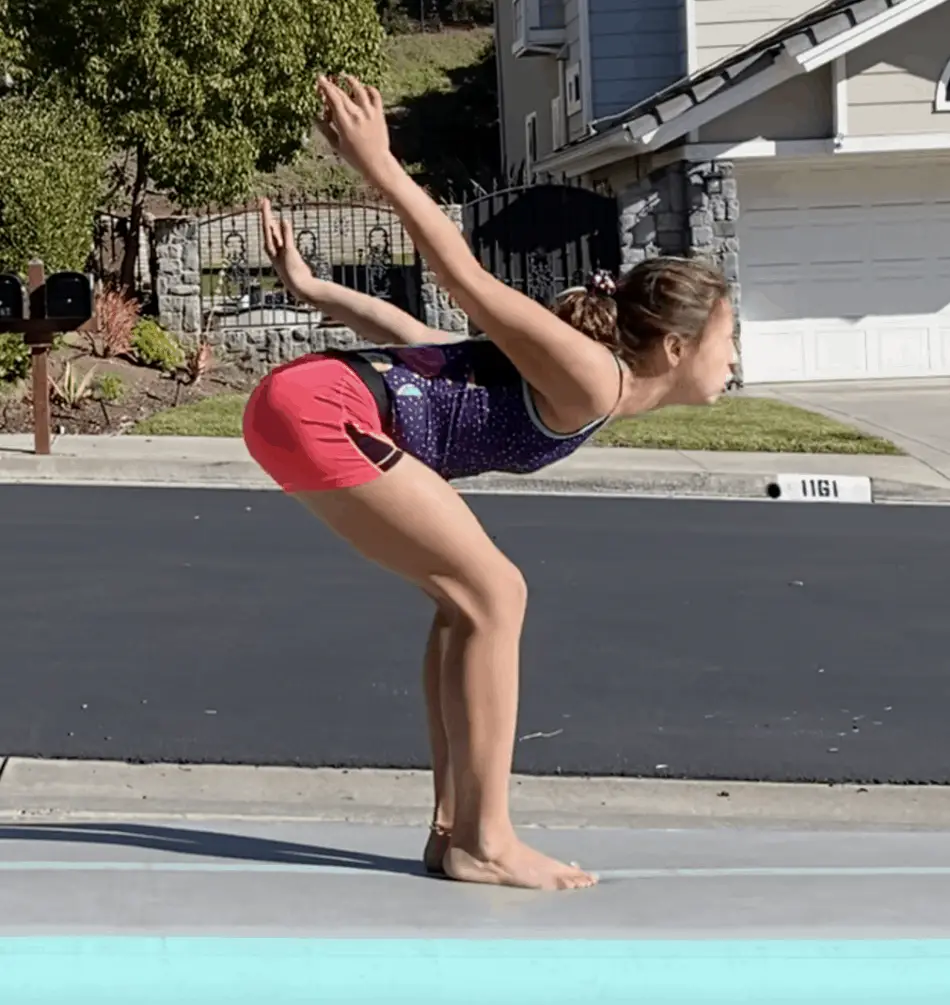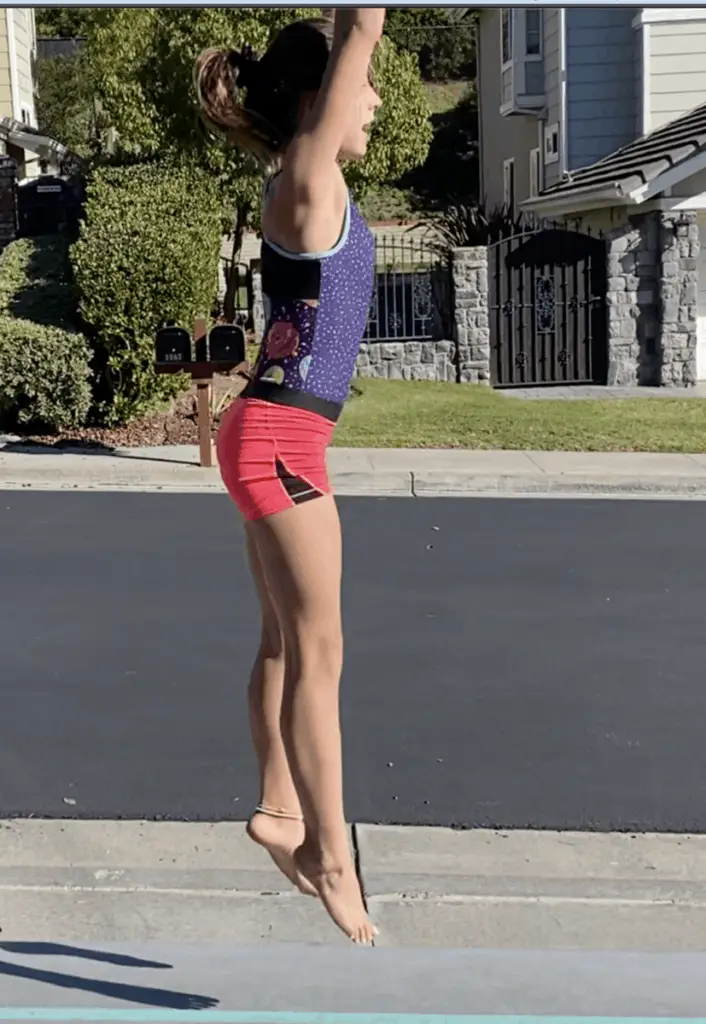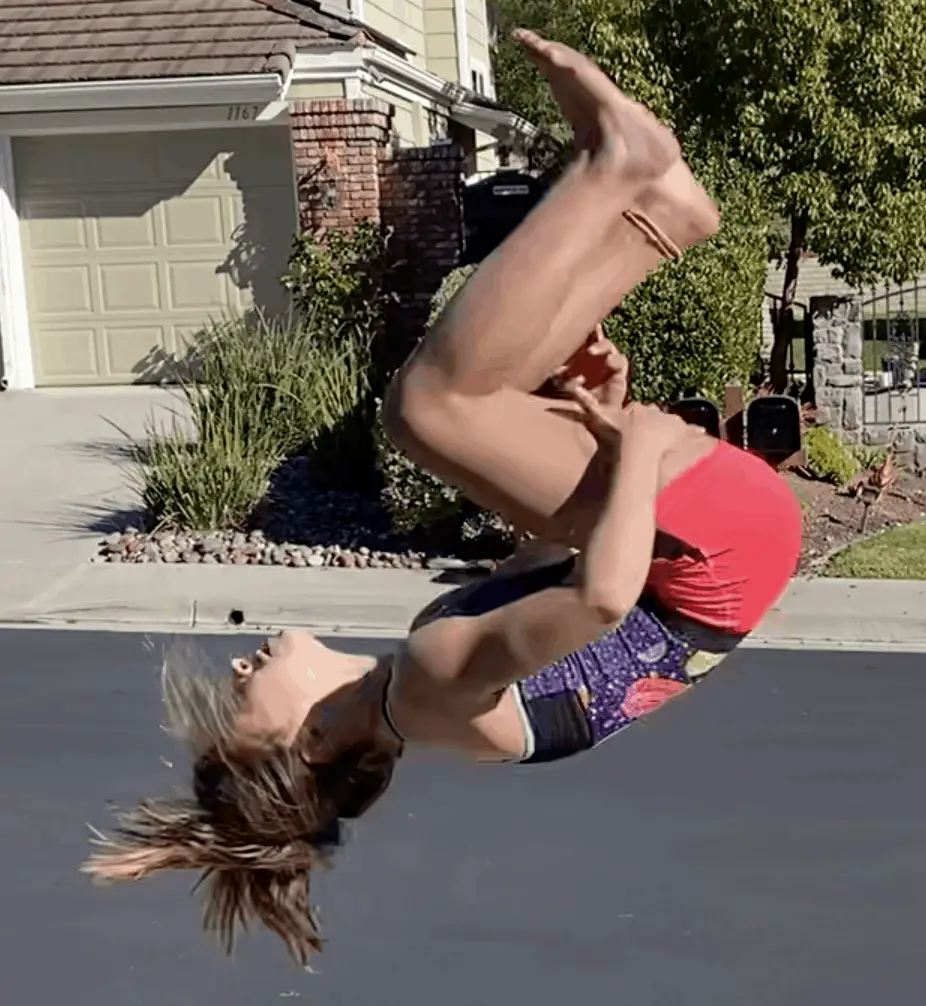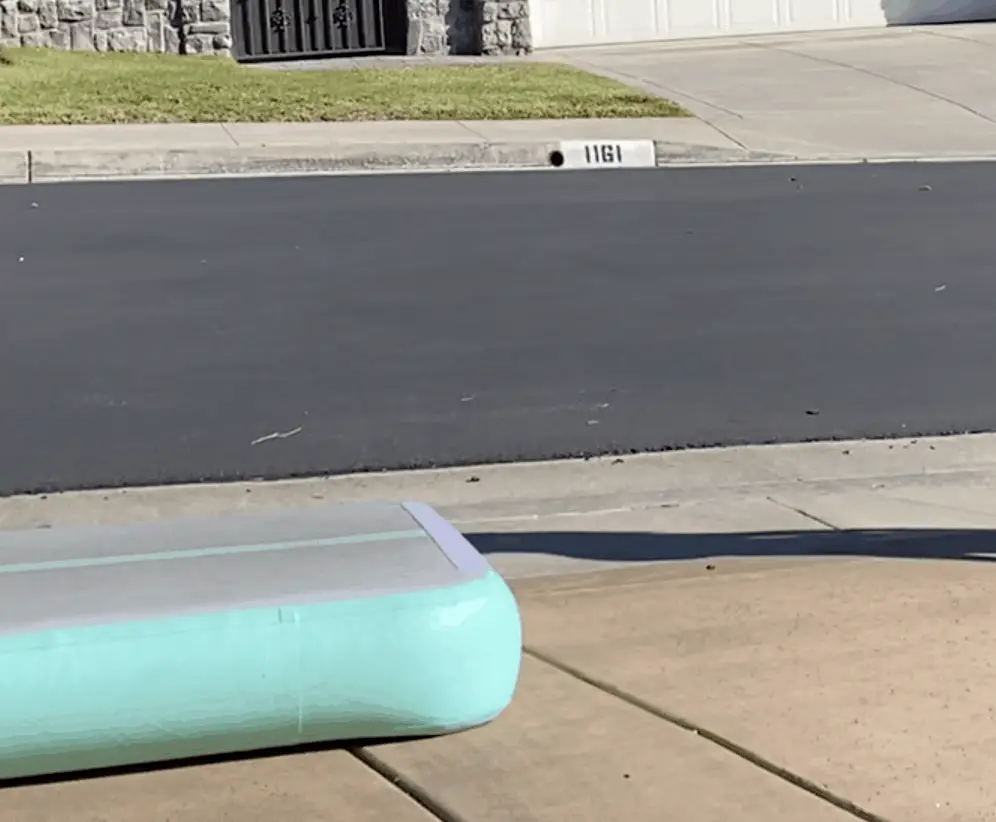Do you want to master a standing back tuck for gymnastics, tumbling or cheerleading? In this article you’ll learn the critical steps to mastering this move for whatever sport you love. It’s also a great skill to show off to your friends.
A standing back tuck is where you will jump into the air propelling your upper body back as your feet accelerate forward over your head. As you tuck your knees to your chest you will complete a flip and then land on your feet.
If you are trying to master this skill for a sport or just want to be able to show off to your friends read on…
In this article I’ll go over the exact steps you’ll need to perform this skill. I broke the article up into simple steps that build on each other. In the end, if you master each simple step you’ll be able to do this skill with ease. I’ve also included video footage from our youtube channel so you can reference each step.
This general information is not to be confused with advice. It is always recommended that all gymnastics movements are performed with a professional spotter. Speak to a professional for all your health and fitness needs and seek their counsel. Children need to be under adult supervision at all times. We disclaim all liability for any physical harm resulting from the information on this website.
Gymnastics123.com
How To Master The Standing Back Tuck In 5 Simple Steps
Prerequisites
- Vertical Jump – In order to master a standing back tuck you must have a strong vertical leap. If you struggle in this category you won’t be able to complete this move. Performing a back tuck on a gymnastics floor (on the move) enables you to capitalize on momentum and the spring of the floor. A standing back tuck requires more strength since you can’t utilize that extra spring and movement.
- Back Handspring – You will also need to have mastered your back handspring. If you have a strong back handspring you are ready to take the 5 steps below to master a standing back tuck.
Step 1 – Master A High Back Handspring: Assuming you’ve got your two prerequisites down you are now ready to move onto step 1. Master a high back handspring. The emphasis on this step is to lighten the impact your hands have on the ground. As you rep this step out keep trying to perform a back handspring but reduce the amount impact your hands have on the ground. You’ll achieve this by focusing on getting more powerful and vertical at the beginning of the move.
Step 2 – Rep Out Eagle Position To Vertical Jump: Once you’ve got your high back handspring down and can perform it with barely touching the surface of the ground you’re ready for step 2. Which is too rep out eagle position to a vertical jump. View the pictures below you will squat down with your hands behind you in eagle position and then explode up into a vertical leap. This step is really about building on our base of strength in preparation for step 3.

The Eagle

Vertical Leap
Step 3 – Perform a standing back tuck from high surface to a lower surface: Once you feel strong on steps 1 and 2 it’s time to start performing a standing back tuck from a high surface to a lower one. Doing this will allow you your body a few split seconds more to rotate and be able to get your feet underneath you as you are learning the move.
Two things to AVOID for this step…

- Don’t have your hands behind your hamstrings as shown in the picture to the left. It’s safer to have your hands on the outside of your knees below near your upper shin so that if you don’t quite make it your hands can reach the ground quickly. Nobody wants to faceplant while trying this move.

- Choose your surfaces wisely! Here is a picture of a air track and then concrete as the landing surface. Make sure you have soft mats to land on when you start performing this step. Air tracks are great higher surfaces but be sure to put a gymnastic mat underneath it to avoid landing on hard surfaces. If you have access to a pit that is also a great option.
Step 4: Master the move on a surface with spring: Before you jump into trying this move on grass or hard ground master it on a surface that has spring. Similar to step 3 this will give you a little more time to complete the back flip and get your feet underneath you again. Air tracks, gymnastic tumble tracks, trampoline and gymnastics floors are great options for floors you can practice this step on. Once you feel you are rotating completely with time to spare before you land you are ready to move on to the next final step.
Step 5: Perform a standing back tuck on a hard surface: Be sure you have not skipped any steps a long the way. Be sure to have a professional spotter when first attempting this movement on a hard surface like grass hard floor or in the street. This movement once mastered is a skill you take with you for a lifetime. Be sure to keep your vertical leap and overall strength on point and go back through the steps again if you need to.
What Sports Do You Need To Be Able To Do A Standing Back Tuck
Performing a standing back tuck in front of your friends is a cool party trick independent of any sports. That being said there are certain sports where a standing back tuck is a requirement.
Gymnastics
Once you reach the mid to higher levels you will need to be able to master this move to perform routines on the floor and bars for womens gymnastics. In mens gymnastics you’ll also need this skill to progress through the higher levels on floor routines.
Cheer Leading
Cheer Leading has become more and more popular in the past 2 decades with tournaments and club teams available for kids starting as early as elementary school. As the sport grows so does the difficulty of the team movements. Standing back tucks are part of many cheer leading routines.
Tumbling
Standing back tucks is a prerequisite for tumbling. You won’t get far in this sport if you can’t mast this movement.
Dancing
Dancing is becoming a sport and while not always required tumbling in dance routines is becoming more and more common. If you can perform a standing back tuck you can be the standout on your dance team since many of your teammates might not be able to perform the movement.
What Apparatus In Gymnastics Require A Back Tuck
In gymnastics you’ll perform back tucks on the floor, vault and beam. A standing back tuck will really happen on the beam because the vault and floor you will be running or tumbling into the movement.
Having the basics of a standing back is still critical for all 3 apparatus as you get into the higher levels. Many other movements start to build onto the standing back tuck.
Its crucial you can master this movement if you want to reach the higher levels in gymnastics.
How To Do A Back Tuck On A Gymnastics Beam
One of the most difficult back tucks you can do is a standing back tuck on a beam. You’ve got to go through multiple steps before you can perform this still on the high beam. Always use a spotter if you attempt this movement. This movement can be a mental hurdle for many gymnasts. If you work your way up to the high beam following the steps below you will be able to perform this skill with confidence.
Here are 4 steps to take to be able to master the back tuck on the high beam:
- Master a standing back on a hard surface. The beam does not offer any spring so you’ll need to be able to do a solid back tuck from a hard surface first.
- Draw a line on the group and perform the back tuck. Stay on that line during the entire movement. If you can’t do this step consistently you are not ready for the next step.
- Start with the low beam with mats on both sides. Protect yourself from injury by placing mats on both sides of a low beam. Once you can perform the back tuck consistently on a low beam without falling off very often you are ready for the high beam.
- Perform a standing back tuck on a high beam!
Conclusion
I hope you got some value out of this article and you are able to master a standing back tuck. This movement is advanced but if you take the time to master it you can show off for your friends the rest of your life. It will also help you reach the next level in many sports. Good luck!

